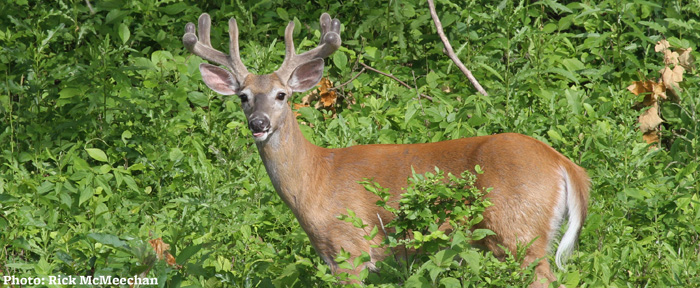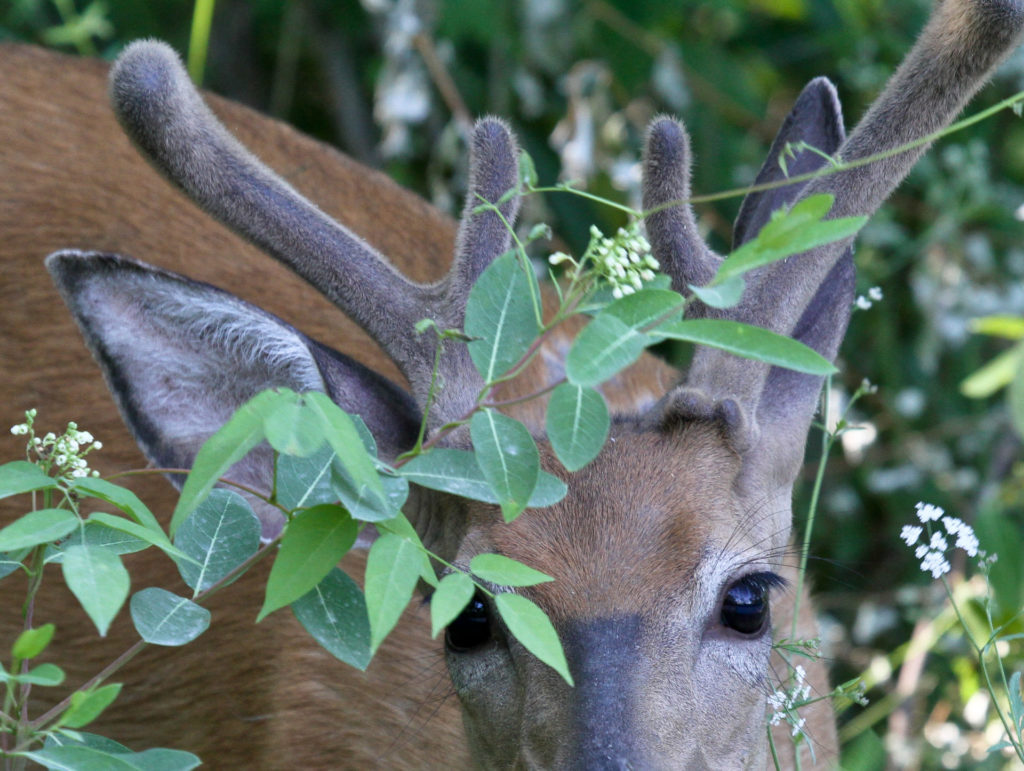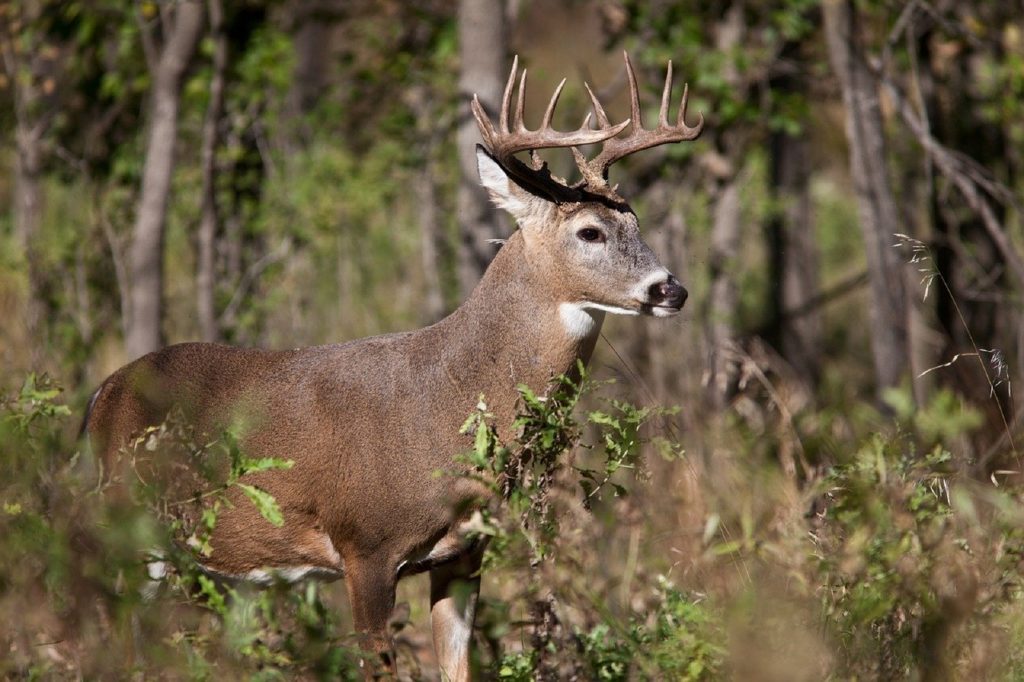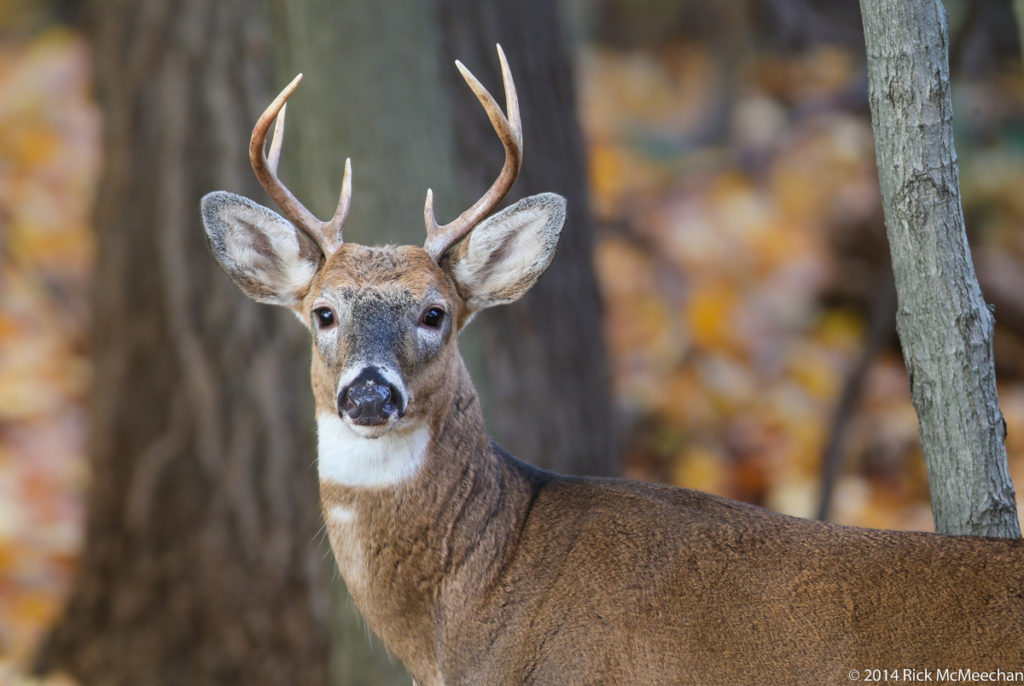If you live around Cuyahoga Valley National Park, chances are you’ve run into a white-tailed deer before. These mammals wander our park chomping on vegetation and enjoying the herbaceous habitat CVNP has to offer. In the summertime, you may notice that some of these deer look a little different—they have a big rack of antlers on their head! In this post, we’ll be discussing all things antlers.

Antlers vs. Horns
White-tailed deer, as well as many members of the deer family, have antlers as opposed to horns. Antlers shed and regrow each year, while horns continue to grow throughout an animal’s life. Antlers and horns also differ structurally. While an antler is made of only bone, a horn contains an exterior layer of keratin (like your fingernails) over the bone. Animals you may know with horns include bison, goats, and even rhinos!
The Growing Process
Bucks shed their antlers every year and they immediately begin growing again. The antler is the fastest regenerating organ in the animal family, and while the day-to-day growth is not consistent, antlers can grow several centimeters per day.
During the growing period, a thick tissue called velvet encases the antler in small hair-like fibers. This prevents damage to the antler. As the summer months continue, the antler begins to calcify and harden, leaving the deer to want to scratch off the dried velvet. Chances are that the scrapes and marks you see on trees around the park were caused by a buck with itchy antlers! This is also why you may see cases around newly planted trees in the park—they help protect the vulnerable tree from deer scratching and eating.

White-tailed deer antlers reach their maximum size between five and seven years old. As the buck ages, the antlers decline slightly in size.

Why do antlers shed?
The antler’s shedding cycle directly follows that of the buck’s hormone cycle. In the winter, the buck sheds its antlers when his testosterone levels are at an extreme low. Bad nutrition and injuries can lead to early shedding. As spring and the growing period begins, the buck’s hormone levels increase. The buck’s hormones are at an all-time high when the velvet sheds off the hardened bone.

Leaving Wildlife Wild
Please help us protect resources in Cuyahoga Valley National Park – including wildlife – by not touching animals and always giving them their space.
Don’t forget to share your deer photos with us on social media using #forcvnp or by tagging us!
You can also email your photos to us at connect@forcvnp.org for a chance to have them featured on our website and social media channels!
The Conservancy is a nonprofit friends group for Cuyahoga Valley National Park. Our goals are to improve visitor experiences, and provide meaningful, life-enhancing programs to our communities. If you would like to join us in protecting the Cuyahoga Valley National Park, please consider supporting your park today.





